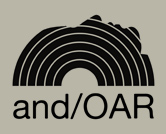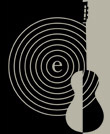

catalog number: either/10
artist: AKIO SUZUKI
title: gelbe MUSIK editions 1999-2000
format: CD x 2
status: sold out
gelbe MUSIK editions 1999 - 2000 is a double CD re-issue of three
extremely rare and highly sought-after CDRs only made available during
exhibitions curated by Ursula Block's gelbe MUSIK shop / gallery in Berlin,
Germany:
- Akio Suzuki: ’75.6.30 (Discogs link)
- Akio Suzuki: Suzuki-Type Glass Harmonica "De Koolmees" (Discogs link)
- Akio Suzuki: Tanabata (Discogs link)
Because it has since been discovered that one of the discs was given a
title based on a mistaken performance date (’75.6.30) and another was
copied from an incorrect audio master (Tanabata) in addition to the CDRs
starting to become unplayable due to age plus other factors, this has
made a CD re-issue all the more imperative.
Akio Suzuki: cardboard box, cellulose tape, Glassine paper, Analapos
Multiple System, 24 dinner plates, De Koolmees (Suzuki-type glass
harmonica), koto, iwabue and token.
CD 1
1. '79.3.5
2. Ha Go Ro Mo
CD 2
Tanabata
1. Yamoto
2. Tanabata
3. Tochu Ga Oka
4. Ohogu Dani
5. Taka No
6. Mondorian #1
7. Mondorian #2
'79.3.5 was recorded on March 5, 1979 during the Takehisa Kosugi & Akio
Suzuki joint concert at Festival D'Automne To 1979.3.5", Cradle Hall,
Aoyama Bell Commons, Tokyo.
Ha Go Ro Mo was recorded by Junko Wada at Naru-Hill, Tango, Studio
Hotarukago, June 25, 1996. Mixed by Hans Peter Kuhn.
Tanabata: Track 1 was recorded indoors by Junko Wada at Gangoji,
Tango, July 4, 1991, around 9 pm. Tracks 2, 3, 4 & 5 were recorded
outdoors by Felix Hess at Miyama, Tango, July 7, 2000, around noon.
Tracks 6 & 7 were recorded outdoors by Felix Hess at Hanareko, Amino,
July 12, 2000, after sunset, around 8 pm. All tracks mastered by Felix Hess.
*Please note: As with the original editions, there are certain audio
"blemishes" (tape flutter, electronic static, radio interference, and an
electronic click) which occur at certain points during some of the recordings
which could not be removed without disrupting the continuity of the
sound, so it was decided to leave them unaltered. However, these are
few and far between and should by no means detract from the enjoyment
of the recordings themselves.
This is a limited edition of 200 copies. 55 copies housed inside a screen
printed muslin bag, along with Akio Suzuki's Dancing Cat (either/8) and
Rub Music (either/9) were offered to pledge donors during a fund raising
campaign for all three releases. A total of 100 bag editions were
produced, most of which were dispersed to those involved with the
production of all three releases (either/8, either/9, either/10).
Special thanks to Ursula Block, Felix Hess, Hiromi Miyakita, Kiyoharu
Kuwayama, and the following people for making this release possible:
Faizal Hirji, Brian Lavelle, Sean O'Brien, HK Kahng, Nancy Novotny, Michael
Quinn, Laurent Wermenlinger, Christopher DeLaurenti, Robert Szkolnicki,
Jonathon Brown, Gary Simmons, James Zachary, Craig Colorusso, Hideo
Makihara, Mathieu Ruhlmann, Yannis Calotychos, Yoshihiro Yamada and
everyone else who generously contributed to the fund raising campaign
for this release via Kickstarter. The other contributors names can be found
at the bottom of the and/OAR News page and archived at the Kickstarter
campaign web page.
Akio Suzuki is known as a pioneer of sound art, but the breadth of his
activities and the form of his works far exceeds the normal boundaries of
sound art. It is perhaps more as a "quester after sound and space" that
he has received the most attention from artists in many fields. Suzuki's
journey as an artist began in 1963 with a performance at Nagoya station
in Japan, in which he threw a bucket full of junk down a staircase. The
inspiration behind this performance was the idea that if one were to hurl
an object down a well-balanced stairway, a pleasant rhythm might be the
result. Since that time, a playful yet deep desire to not only hear, but truly
listen has remained the one constant in Suzuki's approach as a sound
artist.
During the sixties, Suzuki's sense of playfulness led him to undertake a
series of Self-Study Events, where he explored the processes of
"throwing" and "following", taking the natural world as his collaborator.
The experiences he gained in these events led him in the seventies to
invent an echo instrument he named Analapos. The instrument's structure
resembles that of two mirrors facing each other, reflecting into infinity. As
an extension of the principles underlying Analapos, Suzuki constructed the
Hinatabokko No Kukan (Space In The Sun) in 1988. This space consists of
two huge parallel walls, in between which the artist can sit all day and
purify his hearing by listening to the reflected sounds of nature. This
space leads the artist to discover a new method of listening. Suzuki
himself comments, "Sound, which had been conceptually imprisoned in
various spaces, is freed to circle the world."
From the late seventies and through the eighties, Suzuki also developed a
form of performance he refers to as Conceptual Soundwork. Applying a
number of self-imposed, simple and austere rules, he uses objects close
at hand in a mode of "intellectual play". While these events do on the one
hand express a critique of meaningless improvised performance, at the
same time Suzuki is constantly aware of the audience's process of
listening and he attempts to create contemporaneous connections with
the site of performance. It was around this time that Suzuki began to
travel frequently to the US and Europe, and his performances at leading
music festivals, Festival d'Automne (Paris, 1978) and Documenta 8
(Kassel, 1987) were rapturously received.
As sound art enjoyed a period of prosperity in the nineties, Suzuki was
given the chance to create many installations, particularly in Berlin. Worthy
of special note were his soundless installations, such as Otodate (Echo
point, 1996) in Berlin, Enghien-les-Bains (since 1997, http://www.insitu-
enghien.org/) and Strasbourg; Hana (Flower, 1997) at the Stadtgalarie
Saarbrucken; and Pyramid (1999) which involved people excavating
sounds. These soundless pieces were not designed to critique the old
perceptual theories of music, rather they questioned the very location of
music. Through their encounter with these works, the past experiences
and memories of viewers were reconstructed as new experiences. This
process was fundamental to the action of "listening" to the works.
In recent years, the insights he gained from the Turbridge (1999-2000)
installation at the Daad Gallery in Berlin have opened up new avenues of
development for his future work. By recording and creating sound sources
himself, and by using electric amplification with Suzuki's own self-designed
output devices, he was able to reconstruct sounds and experiment with
listening to the "factors of place". These experiments were followed up by
the sound-drawing Mowe (Seagull, 2002) for the Berlin radio station SFB,
and Nagekake & Tadori (Throwing and Following, 2002) which included
some suggestions towards the construction of place. Visitors to the latter
were able to experience a "place established by the artist as a wholly
different space and time axis."
To run simultaneously with these experiments, Suzuki has started the
Mogari series since 2002 at the Brunei Gallery at the School of Oriental &
African Studies in London. This series centres around unbelievably
powerful performances on iwabue - ancient and naturally-sculpted stone
flutes which have been handed down in Suzuki's family. Using these
ancient instruments Suzuki sculpts time and place, and through their
music he searches for his own end.

















